Many Leopard Gecko owners want to know what to feed their pet lizards. If you have a Leopard Gecko as a pet, you want to make sure that you are feeding it the best food possible.
In this blog post, we will provide a comprehensive list of the best foods for leopard geckos. We will also discuss some of the benefits and drawbacks of each food item on the list.
So, whether you are just starting out as a leopard gecko owner or you are looking for new ideas for your pet’s diet, this blog post is for you!
- Key Takeaway
- A Quick Preview of The Best Foods For Leopard Geckos:
- Can Leopard Geckos Eat Mealworm Beetles?
- Can Leopard Geckos Eat Crickets?
- Can Leopard Geckos Eat Dubia Roaches?
- Can Leopard Geckos Eat Fruits?
- Can Leopard Geckos Eat Vegetables?
- Can Leopard Geckos Eat Wax Worms?
- Can Leopard Geckos Eat Locusts?
- Can Leopard Geckos Eat Hornworms?
- Can Leopard Geckos Eat Super Worms?
- How Much Food Should a Leopard Gecko Eat?
- How To Gut-Load Insects Before Feeding Them To Leopard Geckos
- FAQs
- Q: How often should I feed my leopard gecko?
- Q: Can leopard geckos eat fruits or vegetables?
- Q: How do I gut-load my leopard gecko’s feeder insects?
- Q: Can I feed my leopard gecko pre-killed or frozen insects?
- Q: How do I dust the insects with supplements?
- Q: What supplements should I use for my leopard gecko?
- Q: How often should I provide supplements to my leopard gecko?
- Q: Can my leopard gecko drink water?
- Q: How can I ensure my leopard gecko is eating properly?
- In Conclusion
Key Takeaway
- Leopard Geckos should be fed a diet of live insects, such as crickets, mealworms, or dubia roaches, which have been gut-loaded and dusted with a calcium or vitamin supplement to ensure a well-rounded nutritional intake.
- Leopard Geckos should be fed daily as babies, every other day or every 3 days as young adults, and every 5 days as adults if their tail is fatter than their neck.
A Quick Preview of The Best Foods For Leopard Geckos:
- Crickets
- Mealworms
- Wax worms
- Roaches
- Superworms
- Dubia Roaches
- Fruits
- Vegetables
- Locusts
- Hornworms
Can Leopard Geckos Eat Mealworm Beetles?
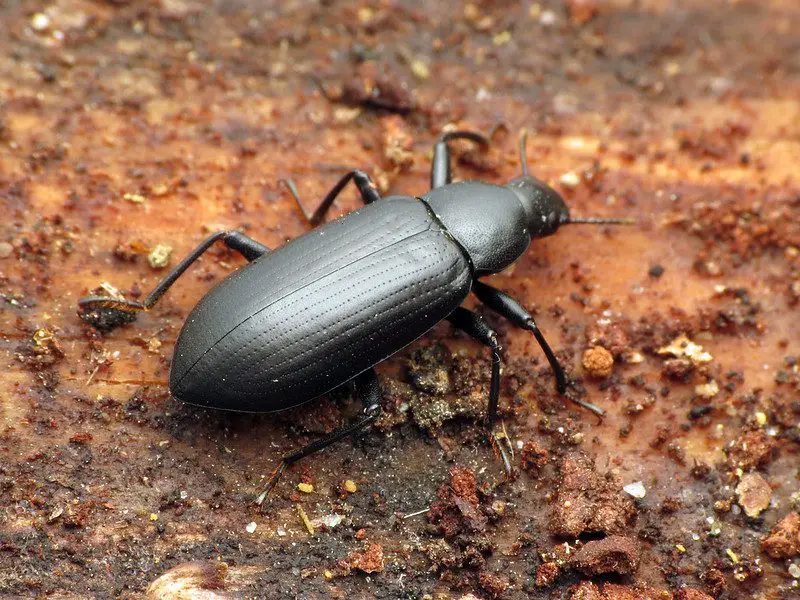
Yes. Leopard Geckos can eat mealworm beetles. Mealworm beetles are a good source of protein. However, mealworms can be hard to digest, so it is important to soak them in water before feeding them to your pet. You should also avoid overfeeding mealworms to your leopard gecko, as this can lead to obesity.
Mealworm beetles are high in protein and low in fat, making them a nutritious food for Leopard Geckos. They also have a high calcium content, which is important for the health of Leopard Geckos. Mealworm beetles are easy to digest, which means that they provide your pet with quick energy.
An 8-ounce bag of mealworm beetles costs around $14 and contains around 2000 mealworms which are enough for around 100 feedings.
The best thing about mealworm beetles is that they are affordable and can be easily obtained from pet stores or online retailers. Even though Leopard Geckos don’t eat a lot, you still have to feed them. Buying expensive foods for your Leopard Gecko will increase your monthly expenses. The key is to provide high-quality food for your pet at an affordable price.
Can Leopard Geckos Eat Crickets?
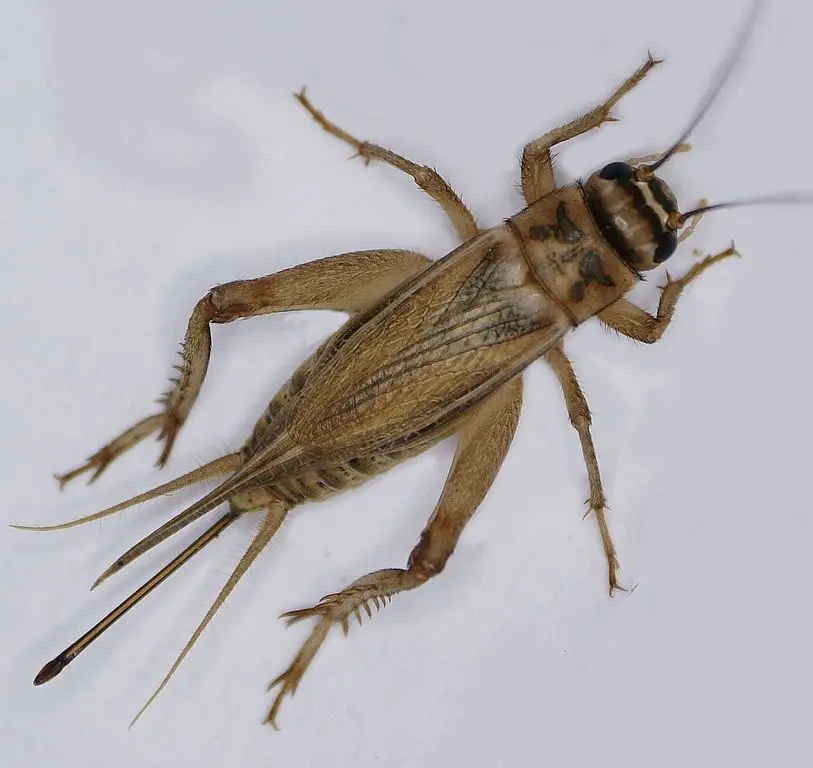
Yes. Leopard Geckos can eat Crickets. In fact, crickets are a great food choice for leopard geckos because they are a good source of protein. However, crickets can also be a bit pricey.
An 8-ounce bag of crickets costs around $15 and contains around 270 crickets which are enough for around 20 feedings.
If you’re looking for a nutritious snack for your Leopard Gecko, consider giving them some crickets! Crickets are high in protein and other essential nutrients, which make them an excellent food source for Leopard Gecko.
They also contain important vitamins and minerals that help keep your pet healthy. Feeding your Leopard Gecko crickets is a great way to give them the nutrition they need to stay active and healthy.
If you decide to feed your leopard gecko crickets, make sure that you buy them from a reputable source. You should also gut-load the crickets before feeding them to your pet. Gut-loading is the process of feeding the crickets a nutritious diet so that they can pass on those nutrients to your Leopard Gecko.
Can Leopard Geckos Eat Dubia Roaches?
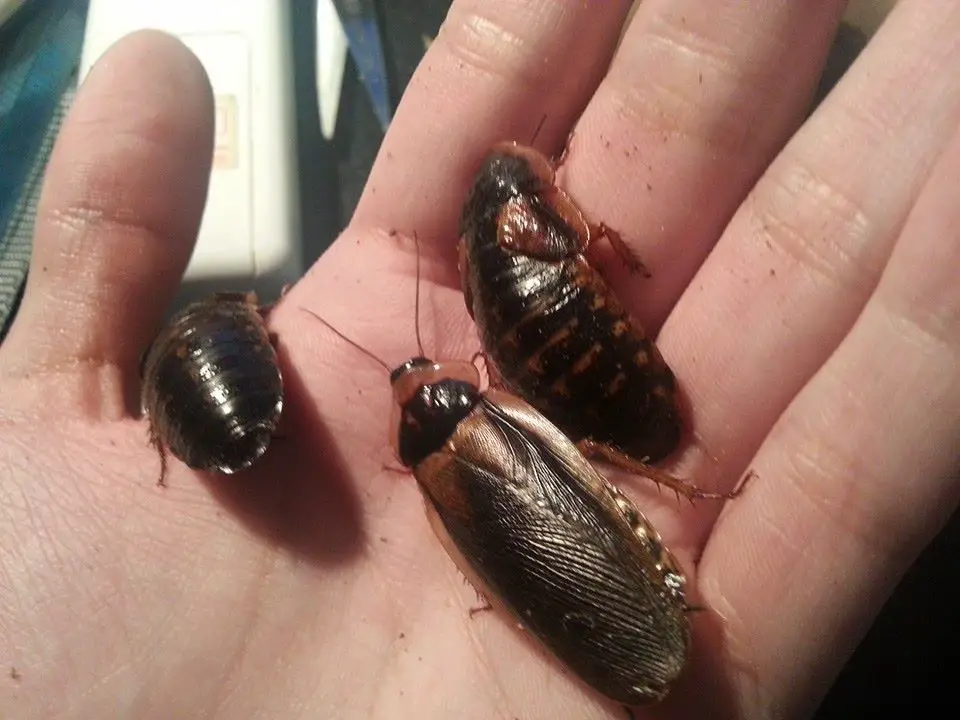
Yes, Leopard Geckos can eat dubia roaches. In fact, Roaches are a good alternative to crickets. They are a good source of protein and they are also easy to digest. However, like crickets, roaches can be a bit pricey. You should also gut-load the roaches before feeding them to your pet.
A 1.2-ounce can of dubia roaches costs around $10 and contains around 200 dubia roaches which are enough for around 100 feedings.
There are several reasons why dubia roaches make good food for Leopard Geckos. For one, they are an excellent source of protein. In fact, a single roach can provide Leopard Geckos with more than enough protein for a meal.
Additionally, dubia roaches are also a good source of fat and moisture, both of which are important for keeping Leopard Geckos healthy. Finally, dubia roaches are relatively easy to digest, meaning that lizards can get all the nutrients they need from them without having to work too hard.
Can Leopard Geckos Eat Fruits?
Yes, Leopard Geckos can eat fruit. There are many benefits to feeding Leopard Geckos fruits. They are packed with nutrients that your Leopard Gecko needs to stay healthy. Fruits are a great source of fiber which helps keep your reptiles’ digestive system functioning properly.
Most Leopard Geckos love fruit and will eagerly eat it whenever you offer it to them. Feeding your lizard fruit is a great way to add some variety to their diet.
Some of the best fruits to feed your Leopard Geckos include bananas, apples, grapes, and watermelon.
However, you can also give them other types of fruit such as strawberries, pineapples, or mangoes. Just be sure to avoid citrus fruits like oranges and lemons because they contain high levels of acid that can be harmful to Leopard Geckos.
There isn’t a guideline on how much fruit you should feed your Leopard Gecko. However, as a general guideline, you should place the fruit of choice in the Leopard Gecko’s food bowl. As soon as they start eating, allow them to eat for five minutes, and then remove the fruit.
So next time you are grocery shopping, be sure to pick up a few pieces of fruit to feed your reptile! They will love you for it. 🙂
Can Leopard Geckos Eat Vegetables?
Yes, Leopard Geckos can eat vegetables. Leopard geckos are omnivorous animals, meaning that they can eat both plants and meat. While most of their diet will be insects, they can also benefit from a small number of vegetables in their diet.
Vegetables make good food for Leopard Geckos because they are low in fat and high in fiber. This helps keep your reptiles healthy and active while providing them with the nutrients they need to thrive.
Vegetables also contain important vitamins and minerals like vitamin A, vitamin C, and calcium. When choosing vegetables for your Leopard Gecko, it is important to select ones that are safe for them to eat.
Some good vegetables for feeding Leopard Geckos include kale, collard greens, mustard greens, dandelion greens, green beans, wax beans, sugar snap peas, and zucchini.
When feeding your Leopard Gecko vegetables, it is important to chop them into small pieces so they can easily digest them. Start with just a few leaves or pods per week and see how your Leopard Gecko does.
If he seems to like them and is getting all the nutrients he needs from them, you can increase the amount. If he starts to lose weight or has other health problems, you may need to cut back on the vegetables.
You can also offer a variety of vegetables to provide your Leopard Gecko with different nutrients and flavors. If you are unsure which vegetables are safe for your lizard to eat, consult with a veterinarian or reptile specialist.
With a little bit of care and attention, you can ensure that your reptile has a healthy and balanced diet that includes plenty of nutritious vegetables says Petco.
Can Leopard Geckos Eat Wax Worms?
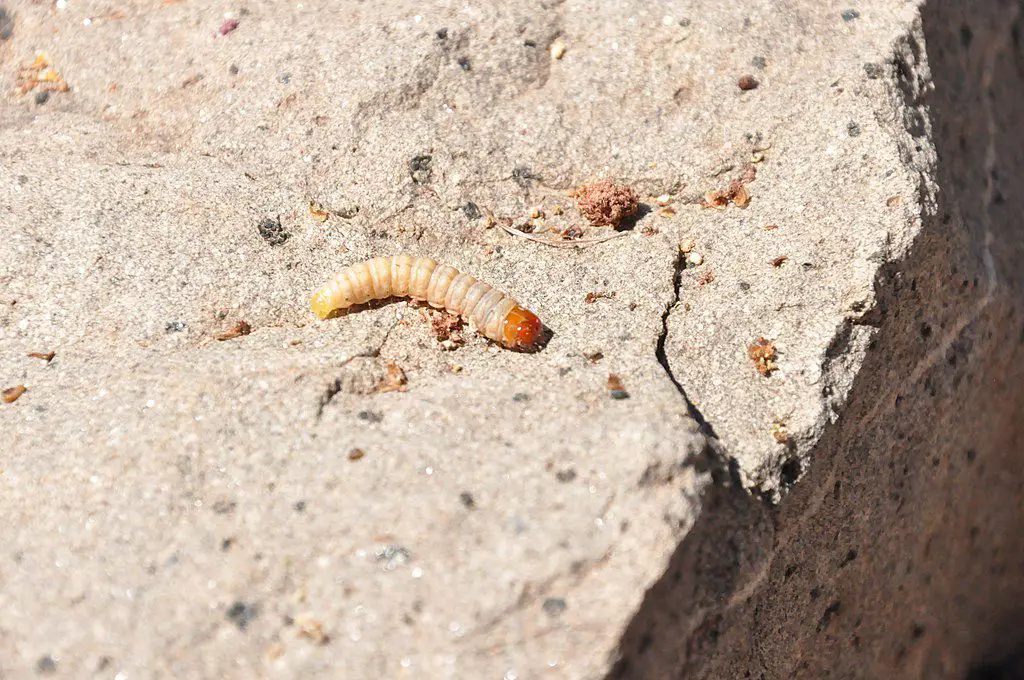
Wax worms are a high-fat food that should only be fed to leopard geckos occasionally. When fed in moderation, wax worms can help boost your pet’s energy levels. However, if you overfeed wax worms to your Leopard Gecko, it can lead to health problems such as obesity and liver disease.
A 1.2-ounce can of wax worms costs around $10 and contains around 170 wax worms which are enough for around 15 feedings.
Wax worms are a high-quality food source for Leopard Geckos, providing them with protein, fat, and other nutrients. Leopard Geckos that are fed wax worms tend to be healthier and more active than those that are not.
Wax worms can also help Leopard Geckos overcome health problems such as obesity and malnutrition. For these reasons, it is important to include wax worms in your reptile’s diet. Not only will they enjoy the taste, but they will also benefit from the nutritional value of these insects.
Can Leopard Geckos Eat Locusts?
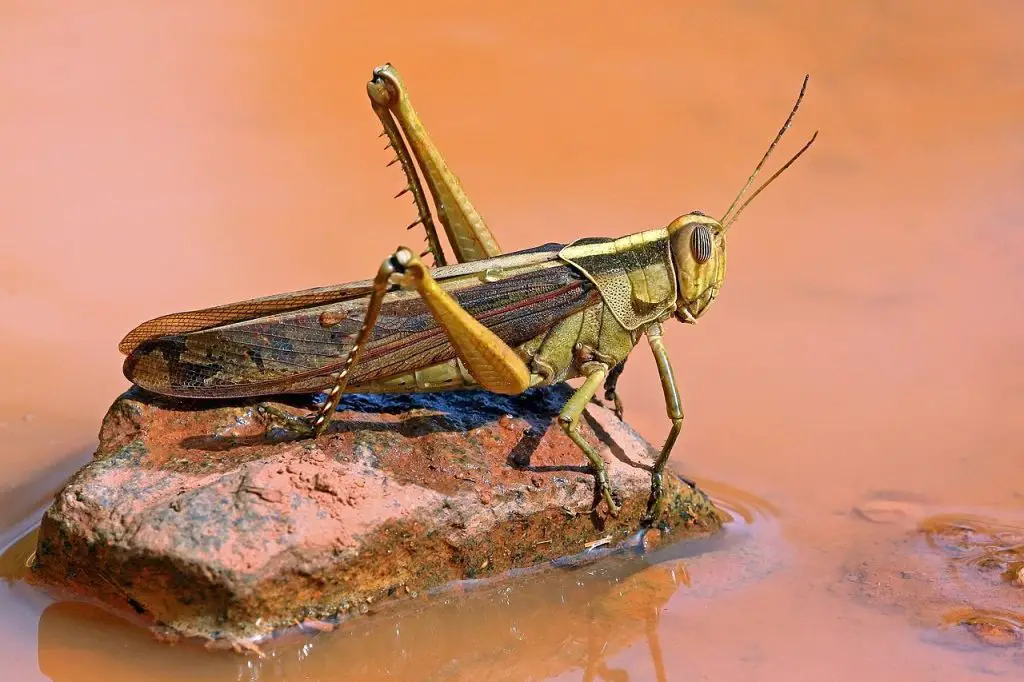
Yes, Leopard Geckos can safely eat locusts. In fact, many Leopard Gecko owners believe that locusts make a better meal for their pets than crickets do. Locusts are not only larger than crickets, but they also have more protein and fat content. This makes them a more nutritious option for your leopard gecko.
Leopard geckos are insectivores, and their diet in the wild consists mostly of small insects like crickets and mealworms. Some leopard gecko owners choose to feed their pets locusts instead of crickets, as locusts are larger and have more meat on them.
That said, you should always feed your leopard gecko a variety of different insects, including both crickets and locusts. This will ensure that your pet gets the best possible nutrition. And don’t forget to dust all of your pet’s food with a quality calcium supplement, as leopard geckos need plenty of calcium to stay healthy.
A 1.2-ounce can of locusts costs around $3 and contains around 17 locusts which are enough for around 10 feedings.
If you’re looking for a good source of live locusts for your leopard gecko, try searching online for a “locust breeder.” There are many reputable dealers who sell live locusts online, and they can be shipped right to your door.
Can Leopard Geckos Eat Hornworms?
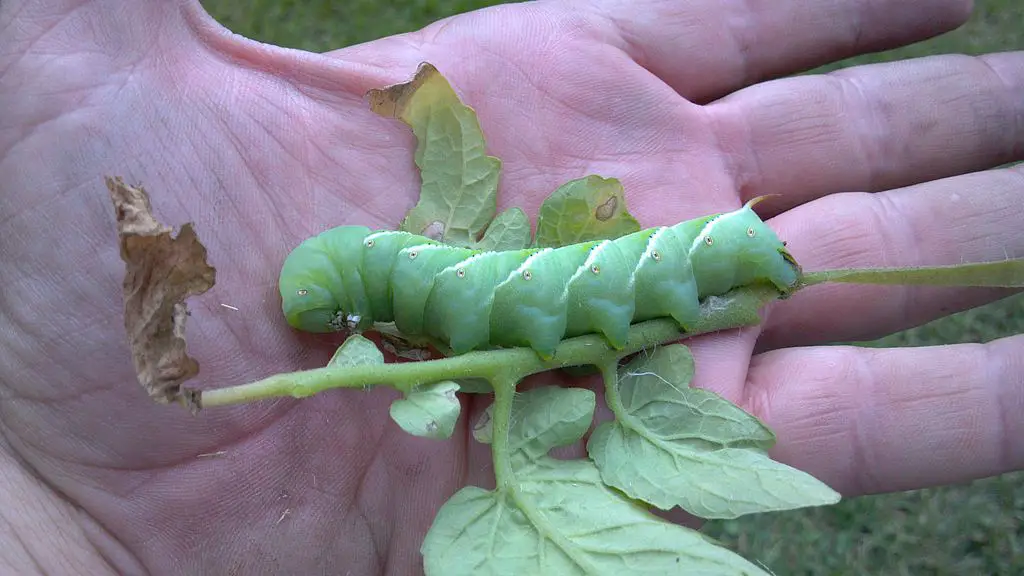
Yes, Leopard Geckos can eat hornworms. Leopard geckos are carnivorous lizards that eat mostly insects. They can eat a variety of different types of insects, including hornworms. Hornworms are the larval stage of the sphinx moth and can be found in gardens and fields. They are green or brown caterpillars with a horn on their head.
Leopard geckos will usually only eat live prey, but they can also eat dead prey that has been frozen for 24 hours first. Hornworms make a good food choice for Leopard Geckos because they are high in protein and low in fat.
12 live Hornworms cost around $15 and are enough for around 6 feedings.
Leopard geckos should not be fed too many hornworms, however, as they can contain harmful parasites. A healthy diet for leopard geckos should include a variety of different types of insects to provide them with the nutrients they need.
If you’re thinking about feeding hornworms to your leopard gecko, make sure to do your research first and consult with a veterinarian if you have any questions. Hornworms can be a nutritious part of your leopard gecko’s diet, but it’s important to feed them in moderation.
Can Leopard Geckos Eat Super Worms?
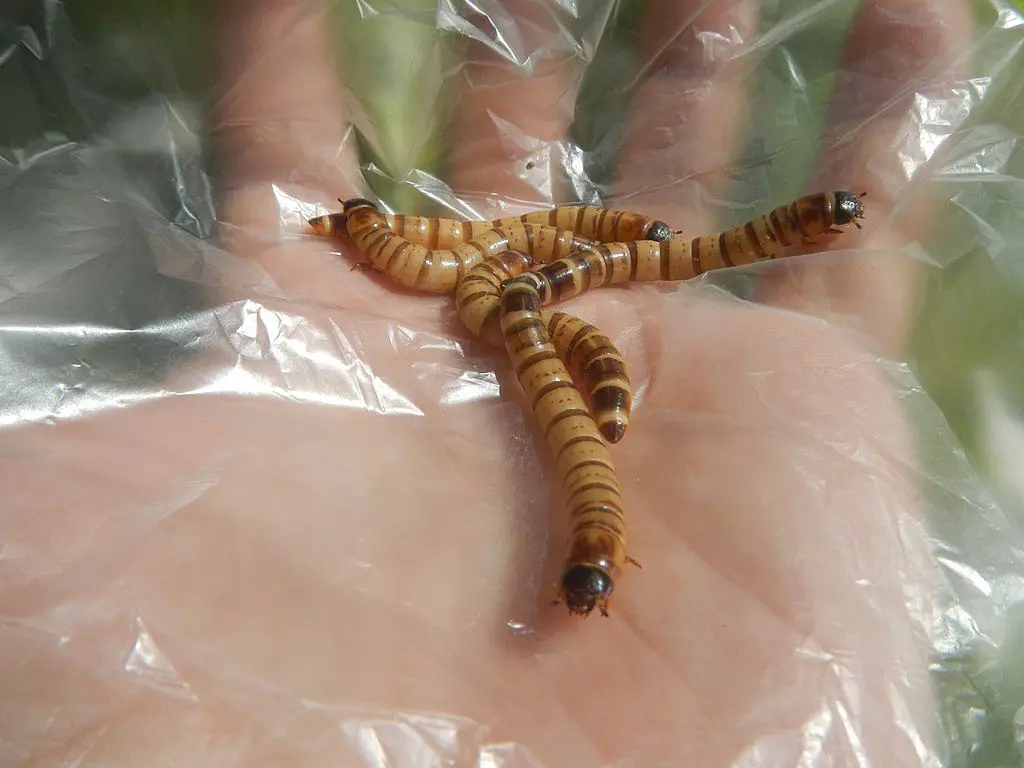
Yes, Leopard Geckos can eat super worms. Superworms are a good food choice for leopard geckos. They are high in protein and are also easy to digest. However, you should avoid overfeeding superworms to your leopard gecko, as this can lead to obesity.
Super worms are a type of beetle larva that are high in protein and fat. They make an excellent food source for Leopard Geckos, especially those that are growing or pregnant.
Superworms are also easy to digest and have a hard exoskeleton, which helps wear down a reptile’s teeth. If you’re looking for nutritious food to feed your Leopard Gecko, super worms are a great option!
A 1.2-ounce can of super worms costs around $10 and contains around 120 super worms which are enough for around 40 feedings.
Additionally, super worms are relatively inexpensive and can be found at most pet stores. They’re also easy to care for – simply keep them in a container with some dry substrate (like sand) and they’ll be happy. When it comes time to feed your Leopard Gecko, just plop a few super worms into its enclosure and watch it gobble them up!
Benefits of Super Worms:
- High in protein and fat
- Easy to digest
- Hard exoskeleton helps wear down teeth
- Inexpensive and easy to find at pet stores
- Healthy and nutritious option for lizards
- Gobble them up quickly!
How Much Food Should a Leopard Gecko Eat?
The size of your leopard gecko will determine how many insects it should eat per day. A good rule of thumb is to offer your leopard gecko as many insects as it can eat in 15 minutes. For baby and juvenile leopard geckos, this may be 20-30 small crickets. For adult leopard geckos, this may be 40-50 medium-sized crickets. As far as worms, a healthy Leopard Gecko will eat one or two worms per day.
Leopard geckos are insectivores, so their diet consists mostly of live insects. In the wild, leopard geckos will eat any type of small invertebrate they can find, including crickets, cockroaches, moths, and beetles.
If you’re ever unsure whether your leopard gecko is getting enough to eat, consult with a reptile veterinarian. They will be able to help you figure out an appropriate feeding schedule for your pet.
While it is important to ensure that your leopard gecko is getting enough food, it is also important not to overfeed them. Overfeeding can lead to obesity and other health problems. A good way to tell if your leopard gecko is overweight is by looking at its tail. If the tail is thick and bloated, this is a sign that your leopard gecko needs to cut back on the insects.
How To Gut-Load Insects Before Feeding Them To Leopard Geckos
When gut-loading insects, it is important to provide a variety of foods that are high in nutrients. This will help ensure that the lizards get the most benefit from their meals.
Good gut-loading foods include:
- Fresh fruits and vegetables: These are a great source of vitamins, minerals, and fiber.
- Live food: Insects such as crickets or mealworms are an excellent source of protein.
- Yogurt: Plain yogurt is a good source of probiotics, which help to keep the gut healthy.
- Water. Make sure that your insects have access to clean water at all times.
FAQs
Q: How often should I feed my leopard gecko?
A: Young leopard geckos should be fed every day, while adult geckos can be fed every other day or every few days.
Q: Can leopard geckos eat fruits or vegetables?
A: While fruits and vegetables may seem like a healthy option, leopard geckos do not have the digestive system to properly process them. Stick to a diet of live insects for your gecko.
Q: How do I gut-load my leopard gecko’s feeder insects?
A: Gut-loading is the process of feeding the insects nutritious food before giving them to your gecko. This will provide additional nutrients to your gecko. Some common gut-loading options include fruits, vegetables, and commercial gut-loading diets.
Q: Can I feed my leopard gecko pre-killed or frozen insects?
A: It is generally best to feed live insects to your leopard gecko. However, if you’re unable to provide live insects, you can try offering pre-killed or frozen insects. Just make sure to warm them up to room temperature before feeding.
Q: How do I dust the insects with supplements?
A: Dusting the insects with supplements is essential to ensure that your gecko receives all the necessary nutrients. Simply place the insects in a container with a powdered supplement and gently shake them until they are coated.
Q: What supplements should I use for my leopard gecko?
A: Calcium and vitamin D3 supplements are crucial for your leopard gecko’s bone health. Also, consider using a multivitamin supplement to provide additional vitamins and minerals.
Q: How often should I provide supplements to my leopard gecko?
A: It is recommended to dust the insects with calcium powder at every feeding, while a multivitamin supplement can be given once or twice a week.
Q: Can my leopard gecko drink water?
A: Leopard geckos obtain most of their hydration from the food they eat. However, it is still important to provide a shallow dish of fresh water at all times for your gecko to drink if needed.
Q: How can I ensure my leopard gecko is eating properly?
A: Monitor your gecko’s weight and body condition regularly. If you notice any significant weight loss or appetite changes, consult a veterinarian to rule out any underlying health issues.
In Conclusion
In conclusion, a well-balanced diet is fundamental for your Leopard Gecko’s health and longevity.
This includes a variety of insects like crickets, mealworms, and dubia roaches, all of which should be gut-loaded prior to feeding.
Additionally, consider dusting the insects with a calcium or vitamin supplement to ensure nutritional adequacy.




